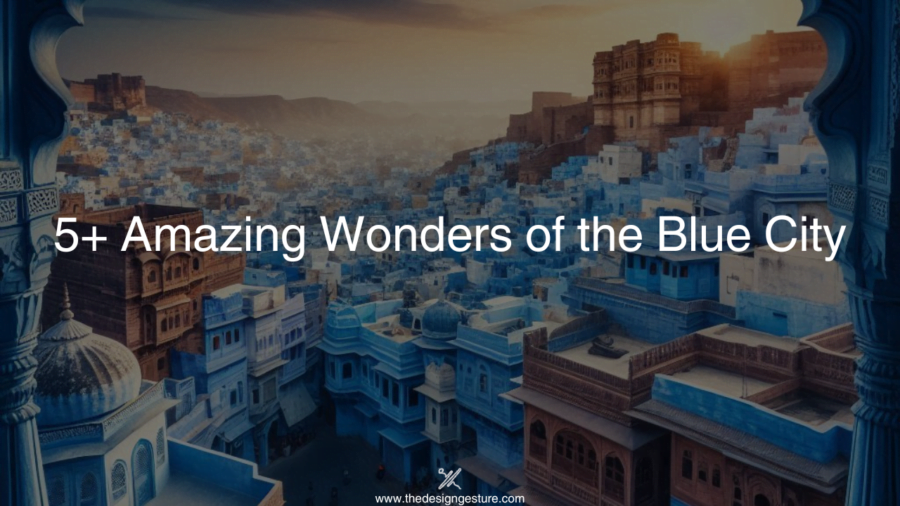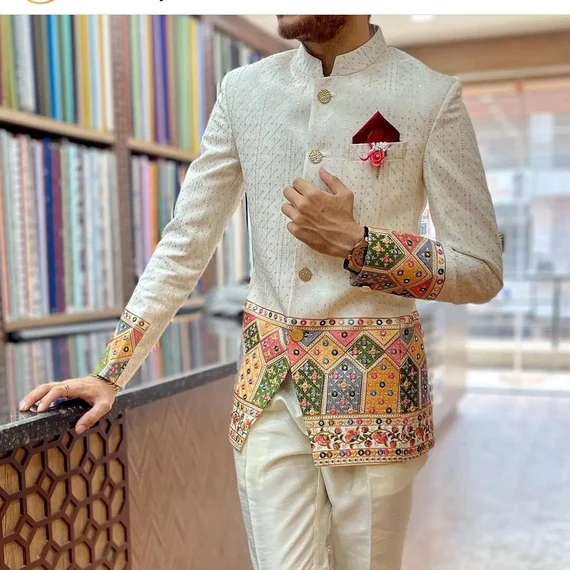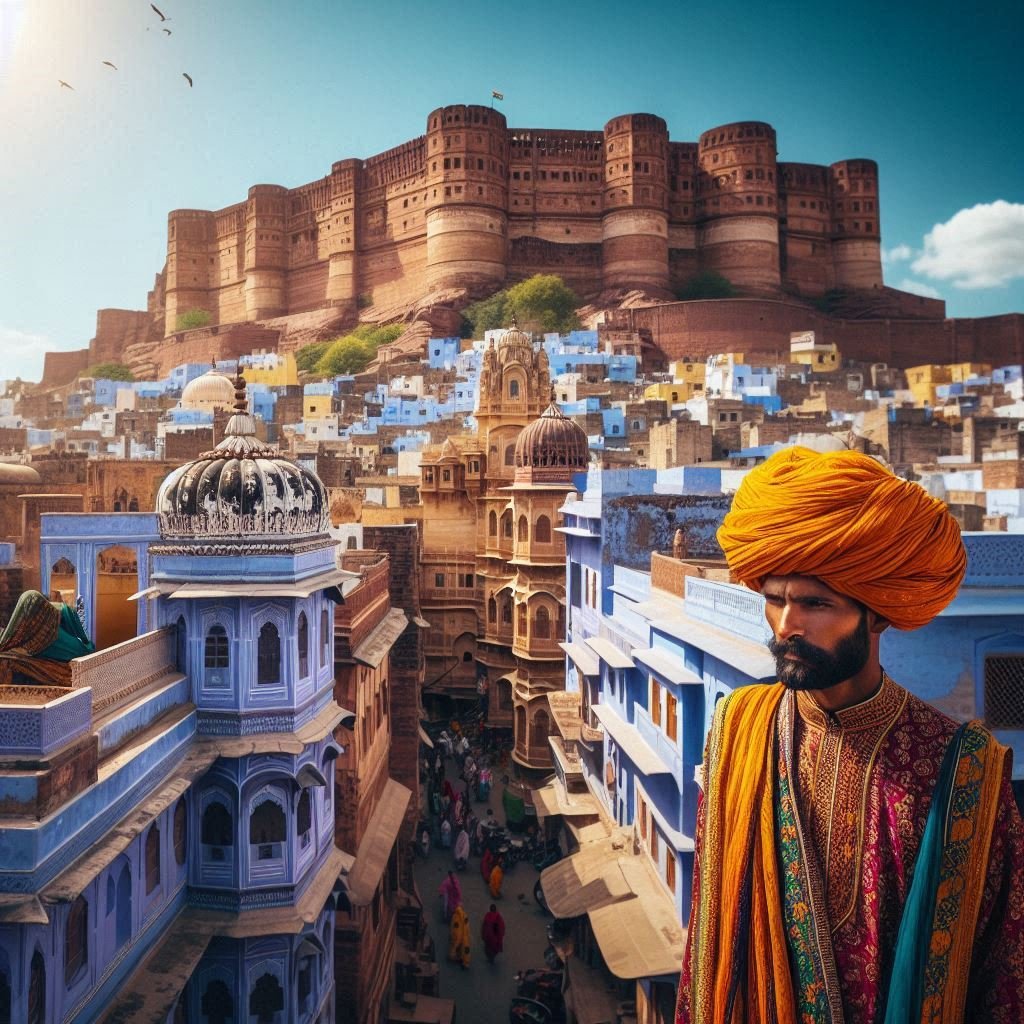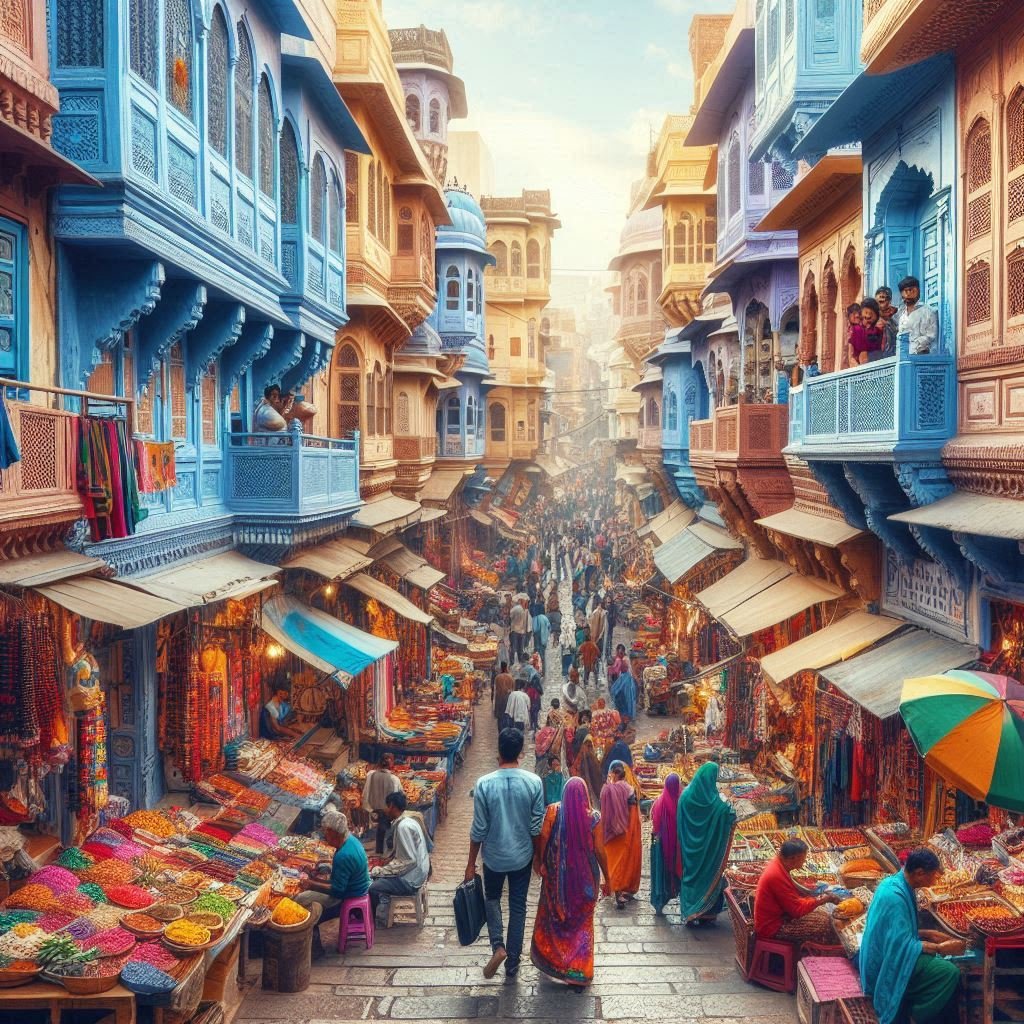Introduction
Jodhpur also known as the **Blue City** is a captivating location with a special place in the center of Rajasthan’s architectural heritage. This city well-known for its breathtaking architecture and vibrant blue homes combines history culture and breathtaking architectural designs to leave visitors in awe.

Jodhpur Best Places to Visit

Jodhpur Fort

Blue City
The Origins of the Blue City
Many people are curious as to **Why Jodhpur is called the Blue City**. The centuries-old custom of Brahmins the priestly caste painting their homes blue to denote their rank provides the explanation. With time other locals adopted the custom and today the **Jodhpur Blue Houses** dominate the surroundings lending the deserts surreal atmosphere a surreal feel. A particularly alluring view is the **Jodhpur Blue City View** from the tall **Mehrangarh Fort** which offers an endless expanse of indigo-hued buildings.

Jodhpur Stone

Architecture in Jodhpur

Jodhpur Famous Places
Architectural Wonders of Jodhpur
Jodhpurs rich cultural legacy and history are reflected in its architecture. Many architectural wonders that each tell a unique story can be found throughout the city. One of India’s biggest forts the **Mehrangarh Fort** is the pinnacle of **Rajasthan architecture**. This magnificent fort 400 feet above the city is a remarkable example of **Rajputana style** merged with **Indo-Islamic design**. It was constructed in 1459 by **Jodhpur King** Rao Jodha.

Jodhpur Ka Kila

Jodhpur Fort Name

Jodhpur Mehrangarh Fort
One more important landmark is the **Umaid Bhawan Palace** one of Jodhpurs more recent architectural marvels. One of the biggest private homes in the world this palace was constructed between 1928 and 1943 and features a fusion of Indian and Western architectural elements especially **Jodhpur stonework**.

Jodhpur Ka Kila

Jodhpur Fort Name

Jodhpur Mehrangarh Fort
Jodhpurs architectural legacy also includes **traditional havelis** and **stepwells (Baoris)**. Typical of the regions craftsmanship are the elaborate **latticework (Jalis)** and **Chhatris (Cenotaphs)** found in these buildings.

Jodhpur Lake

Stepwells (Baoris)

Latticework (Jalis)
Exploring Jodhpur: A Heritage Walking Tour
Participating in the **Jodhpur Blue City Walking Tour** or the **Jodhpur Blue City Heritage Walking Tour** is a must-do while visiting Jodhpur. These tours take guests through bustling markets old temples and narrow lanes lined with blue houses giving them an up-close look at the citys architectural wonders. You can take breathtaking **Jodhpur Blue City Images** along the route that truly capture the energy of the city.

Jodhpur Stonework

Sun City Architecture

Places to visit in Jodhpur
Jodhpur has plenty of options for people who are interested in architecture. The city is a living classroom where visitors can learn about **traditional architecture of Jodhpur** and explore the work of modern **Jodhpur architecture firms**. Remarkably the **Raas Jodhpur Architecture** provides a luxurious experience in the heart of the old city and is a great example of fusing contemporary conveniences with historic aesthetics.

Rajputana Style

History of Jodhpur Fort

Traditional Havelis
Education and Research in Jodhpur’s Architecture
Jodhpur is home to several institutions that offer an in-depth study of the **vernacular architecture** of the region such as **Jodhpur Architecture College** and **IIT Jodhpur Architecture**. A crucial component of designing for sustainability and climate change in Rajasthan’s desert climate is understanding the **Jodhpur Architecture Case Study** which examines a number of historical buildings.

Rajputana Style

History of Jodhpur Fort

Traditional Havelis
Jodhpur: A City Beyond Architecture
Jodhpur is well known for more than just its architecture other aspects of its culture are also well-known. Popular not only in India but also around the world is the traditional **Jodhpuri Suit**. Because there are so many sunny days in the city all year round it is also referred to as the **Sun City**. Because of this Jodhpur is a wonderful place to visit year-round though the cooler months are usually the best.
Conclusion
With its **Blue City Architecture** and extensive history Jodhpur is a destination worth seeing as well as a memorable experience. Jodhpur has something to offer everyone whether they are history buffs lovers of architecture or just tourists hoping to experience Rajasthans vibrant culture. The **Jodhpur Blue City Tour** promises a journey through time as well as a visual feast with each blue house contributing to the citys enduring charm and each stone telling a tale.

Marwar Region

Jodhpur Mandi Bhav

Jodhpur Satta King
Frequently asked questions (FAQs) about the Jodhpur Architecture
Why is the Blue City of Jodhpur called that?
Jodhpur is referred to as the Blue City due to the majority of the older blue-painted homes in the citys old section. Originally Brahmins would do this to denote their rank but as the custom spread the city’s famous blue scenery was produced.
Which Jodhpur architectural sites are a must-see?
Some of Jodhpurs must-see architectural attractions are the Umaid Bhawan Palace Jaswant Thada Mehrangarh Fort and the citys numerous traditional havelis and stepwells.
What does Jodhpurs Mehrangarh Fort mean?
One of Indias biggest and most striking forts is Mehrangarh Fort. Constructed by Rao Jodha in 1459 this iconic structure represents the wealth of Jodhpurs past and is a shining example of Rajputana and Indo-Islamic design. In addition to housing a museum with a sizable collection of artifacts the fort provides sweeping views of Blue City.
Can we travel to Jodhpur in the summer during the months of June or July?
Certainly you can travel to Jodhpur during the summer but keep in mind that the city experiences extremely high temperatures frequently rising above 40°C (104°F). During the cooler months of October through March is the ideal time to visit Jodhpur.
What are the best ways to visit Jodhpurs Blue City area?
A guided walking tour is the ideal method to discover the Blue City region on foot. These tours lead you through the old citys winding lanes where you can see the blue houses up close go to historic places and get a firsthand look at the local way of life.







